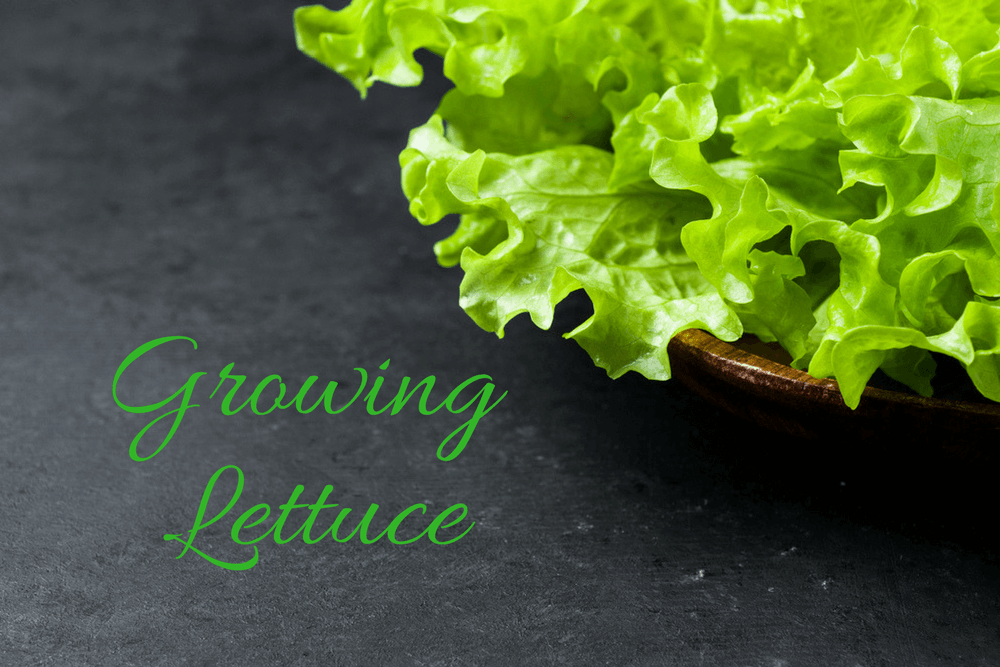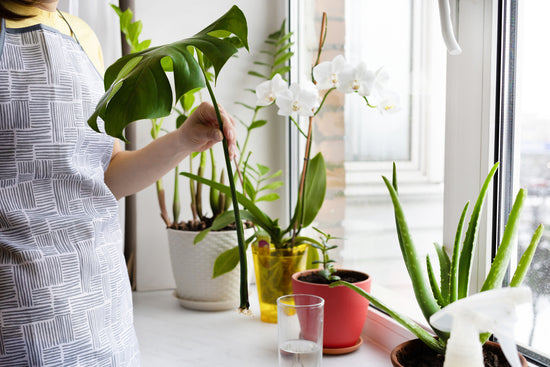
How to grow Lettuce?
Lettuce grows best in rich, fertile soil that is well drained but retains moisture. It grows well in full sun but can also tolerate little shade in hot weather. If left unattended, Lettuce will become bitter and bolt to seed, hence be sure to water it regularly, mulch and fertilize well.
Grow Lettuce from seed:
Sow the seeds in clumps 20-30 cm i.e. 8-12 inches apart on the well-worked soil. Or use seedlings to save four weeks of growing time. When the seedlings are about 4cms high, thin all but the strongest seedling. Leaf Lettuce self-seed, but if you are looking for a continuous supply, then sow every four weeks.
When to plant Lettuce?
Lettuces grow easily when planted as soon as the soil has warmed up in the spring. To achieve an early summer crop, sow under cover from winter to early spring, and the transplant. For even earlier Lettuces choose hardy varieties that you can plant after the fall, protecting them with proper measures during winter.

How to Harvest Lettuce?
Cut the Lettuce head with a knife just above the ground level, or pull up the whole plant and cut off the root. Pick the leaf from the green varieties as and when you need them, taking outer leaves first. During summers the sugar content in the leaves is high in the morning, hence harvest the plant only in the mornings.

Pests and Diseases that harm Lettuce:
Snails, slugs, and earwigs relish fresh Lettuce. The crop gets bitter due to stress because of irregular watering, feeding, and poor soil conditions.
Varieties of Lettuces:
There are three main types of Lettuce varieties that you can choose depending on the climate.
1. Crisphead and Butterhead Lettuces:
This particular type forms a tight, solid head of foliage, that can be harvested when the head reaches maturity at 8-10 weeks, after which it starts to elongate and flower. The plant does not regrow once its head is cut off. Iceberg, Red Iceberg, and Great Lakes fall under the Crisphead variety. While the soft, loose head forms the Butterhead varieties viz. Boston, Buttercrunch and Mignonette. They can be harvested as a whole head, or their leaves can be picked.

2. Leaf Lettuces:
These are also known as the salad bowl staples or lettuces. While some form a Rosette, none have a dense head of Butterhead or Crisphead Lettuces. They are a must have for all vegetable and gardening lovers as they can be quickly picked when needed. The Leaf Lettuces take about 4-6 weeks to mature, so the whole head can be harvested when fully grown. Do not let the headset seed. You can also pick up leaves from these varieties when you see that the plant is growing well. Common Leaf Lettuce varieties include Speckles, Spotted Trout and Australian Yellow.

3. Romaine Lettuces:
This variety is known as Romaine Lettuces because they form the main ingredient in Caesar salads. Grown well, these elongated Lettuces with central midribs are sweet. The whole head is ready in 8-10 weeks. Its individual leaves can be easily harvested when needed. Remember that if you harvest the whole head, the second head that comes up will be bitter. The upright nature of the Romaine Lettuces’ allows closer planting. Little Gem is a favorite variety of Romaine Lettuces known.

Tip:
Grow the Leaf Lettuces in between cabbages and cauliflowers. Planted at the same time Lettuce will be ready to harvest in eight weeks; the slow growing vegetables can then take their own sweet time to reach maturity.

Fun Facts:
The ancient Greeks believed that Lettuces aided sleeplessness and hence served it at the end of dinner.

References:
Grow Vegetables - Alan Buckingham
The Ultimate Book of Vegetables - Reader's Digest










